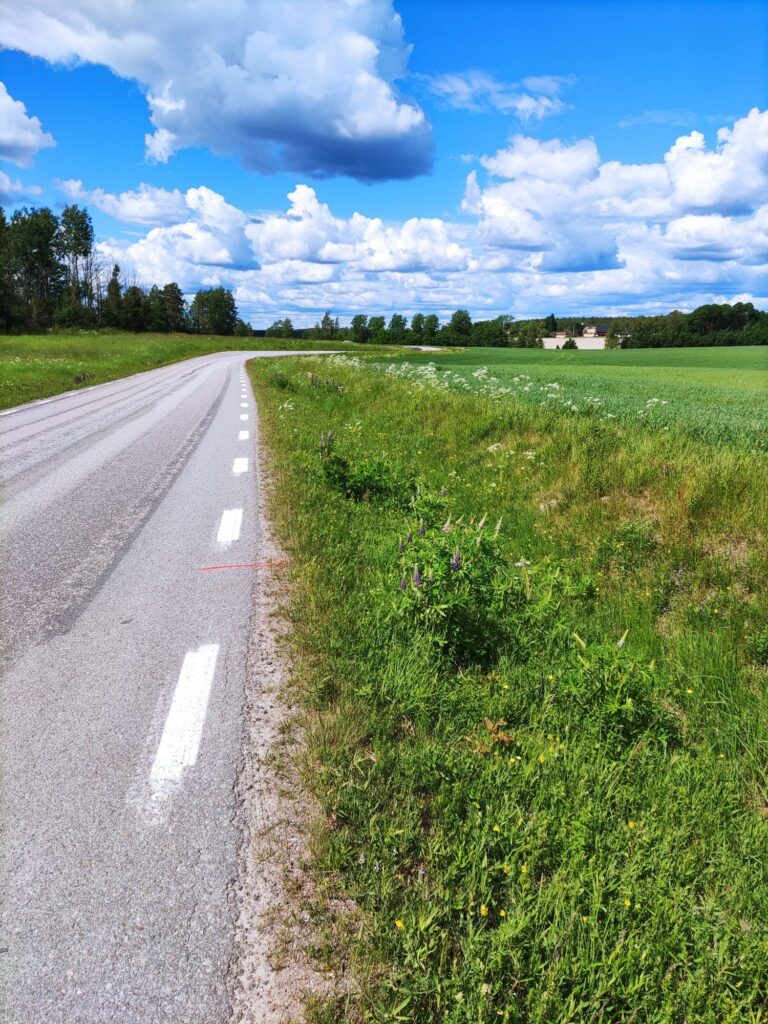Hej, my name is Hanna Paikert and I completed a three-month-long internship at NRRV. My main motivation for this internship was to gain insight into a different research environment and to expand my knowledge regarding different scientific methods. Additionally, I aimed to figure out if I want to pursue a Ph.D. (A question I can answer now: it’s a big yes!)
During my time in Karlstad, I was involved in different projects but mainly worked with Elin Blomqvist and Lutz Eckstein on the project “Evidence-based control and monitoring of Garden Lupine for the conservation of species-rich road verges”. (But see: “Fish, poop and plants: crap research isn’t as bad as it might sound.”) The Garden Lupine (Lupinus polyphyllus) is an invasive plant species originally from North America which has spread massively along road verges in Sweden. Due to its large height, its ability to fix nitrogen and the high numbers of seeds each plant can produce, it has become a threat to native biodiversity. Thus, the control of this species is of high relevance along species-rich road verges. At the beginning of my stay, I focused on the effects of heat treatment on seeds and roots of the Garden Lupine to investigate whether high temperatures could decrease the germination rate of seeds and the survival of treated root parts. This is particularly important when large soil masses, which contain seeds or roots from the Lupine are transferred from one site to another. Here we used Triphenyl tetrazolium chloride to visualize the viability of the roots and seeds after the treatment. The red color indicates viability, no staining shows a dead plant part (see figure 1).
Figure 1. Roots of different diameters after heat treatment. The roots on the left were cooked in boiling water for 10 minutes, the roots on the right were not treated with heat. Red color indicates viability
With the beginning of summer, field season started. I joined Elin while setting up the plots for a mowing experiment which comprises eight sites all over Värmland and will go on for the next three years. The goal is to investigate the effects of different mowing heights and frequencies on the spread of the Garden Lupine, as well as the native species richness. After the experiment was set up, we started with species inventories in which I got to expand my knowledge of species identification and gained a lot of botanical vocabulary in Swedish [😊]. During my last weeks, I assisted Elin with the first round of mowing and was lucky enough to see some drone flights to visualize the spread of Lupine from the air. Due to the fact, that the sites for this experiment are located all over Värmland, I was very lucky to see a lot of beautiful places as well as some wildlife (see figure 2)!
Figure 2. Species-rich road verge in Värmland invaded by Garden Lupine
Last but not least I want to thank my supervisor Lutz Eckstein who coordinated my stay and gave me a lot of tips for my future career, Elin Blomqvist for great times in the field and her patience in teaching me “botanical Swedish”, Jaqueline Hoppenreijs and Sebastian Rock for taking me along to the field. A big thank you goes out to the whole department who welcomed me very warmly and made me feel included from day one! It was great getting to know you and getting a sneak peek into your research!





